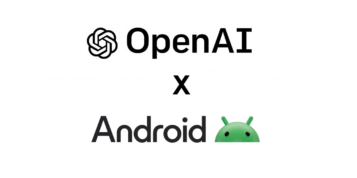Artificial Intelligence (AI) has been filling column inches for a while now – and for good reason. The tech is set to be transformative: whether its health, retail, automotive, or even education, AI is creating buzz across the board. Marketing and adtech are no different, but require their own specific, tailored approach.
With all the excitement, it’s tempting to rush in, pick out the biggest and best tech solution, and go great guns. But it’s important not to bite off more than you can chew: taking your time and getting each step right will make all the difference in the long term. Here’s a few suggestions on how to set out on your AI journey in the right way and start feeling the benefits from day one.
No time like the present
First things first – AI is not all ‘adaptive neuro fuzzy inference systems’ and ‘admissible heuristics’. Despite its reputation as ultramodern and extremely complex, AI belongs very much to the here and now – and it needn’t be rocket science. In fact, there’s a whole range of simple AI that can be easily integrated into advertising campaigns without breaking the bank – or blowing up your brain.
AI-powered A/B testing, for example, is a great way to identify the right subject line or marketing copy – it’s just a way of comparing two versions to see which performs better amongst audiences. Other tools might help you target your CTV content, or boost your workflow efficiency.
Whatever the tool, by letting AI take on these small jobs, you can focus on the bigger, more important, things, without spending an arm and a leg. It also means boosting ROI by making a noticeable difference straight away – rather than slaving away on complex plans for months and not seeing a penny. Give it a go.
Quality, not quantity
With the basics in place, you’ll soon be ready to start involving more complex tech. But that doesn’t mean incorporating more and more AI in every sphere of your business until absolutely everything on your roster is AI-powered. If you use AI willy-nilly without any strategic goals, you’ll waste time and money. Keeping your business objectives front of mind when applying the tool is a good way to keep it in check.
In fact, a ‘quality over quantity’ outlook will be key in using AI to the best of its abilities more generally. The point of AI isn’t just to push out more and more ads, but to create better advertising which fulfils the wants and needs of your audience. AI is invaluable in creating a clear picture of how, when, where, and even how much to engage with your audiences, meaning you don’t have to send out reams of hit-and-miss advertising. Remember – the most receptive audiences are those who are engaged and interested by what you have to say.
That’s crucial when working with emerging platforms like, for example, CTV: AI can make sense of all the data on the platform and give you an idea of the types of content audiences like – and how to tailor your ads accordingly. It might even reveal how to deliver those ads most optimally, or point towards better pricing strategies.
Tech-driven advertising will only succeed when it goes in tandem with your business objectives – and delivers what consumers actually want. So remember to keep your eyes firmly on the prize.
Consistency
With the arrival of any new technology in a business, there’s always the question of where it’s supposed to sit. All too often that uncertainty leads to a ‘crisis of the commons’ scenario where nobody truly owns it – and it gets neglected, or worse, misused.
To get the most out of AI and avoid the above, it’s important to lay out a unified approach. Battling between teams to work out who owns what is wasted time that could be better spent on optimising and getting results.
What does that mean in practice? Well, whether you’re using your AI in dynamic creative optimisation or in API triggers, make sure the implementation and the impetus remains the same across the board. It doesn’t make sense for your mobile targeting to be informed by location, for example, whilst your desktop strategy is based on the weather. And if social media is important to your strategy, make sure it fuels both native and audio.
Ensuring you use AI consistently across channels means making sure your messaging is consistent for all your customers, across platforms. That’s infinitely more effective than heading in all directions at once.
No time like the present
You don’t need a PhD in computer science to make AI work for you. But you do need just a little drive – and perhaps just a pinch of common sense. If you dwell on the future, you’ll miss out on the present, and there’s more than enough AI out there to start optimising and improving now. If you work small, effective AI tools into your business now – and ensure your messaging is consistent on each and every channel – you’ll be in a much better position to jump on the next big thing when it comes.





